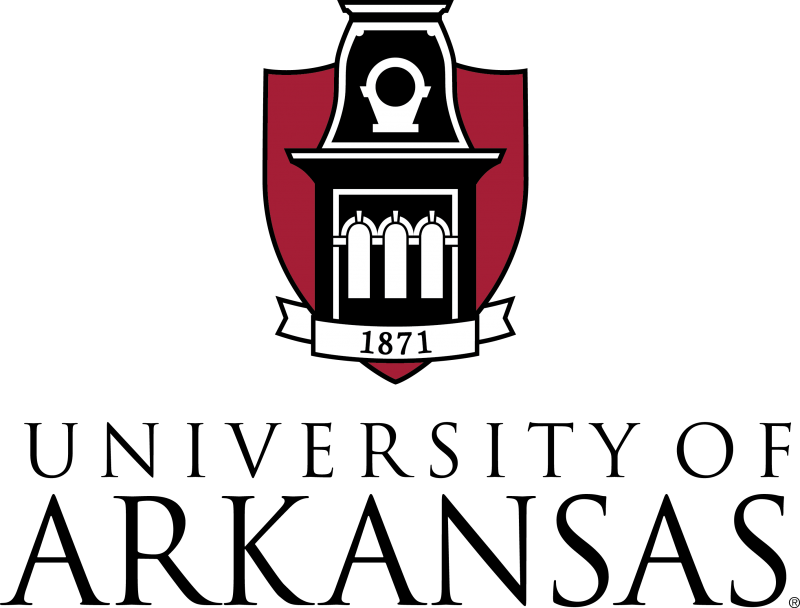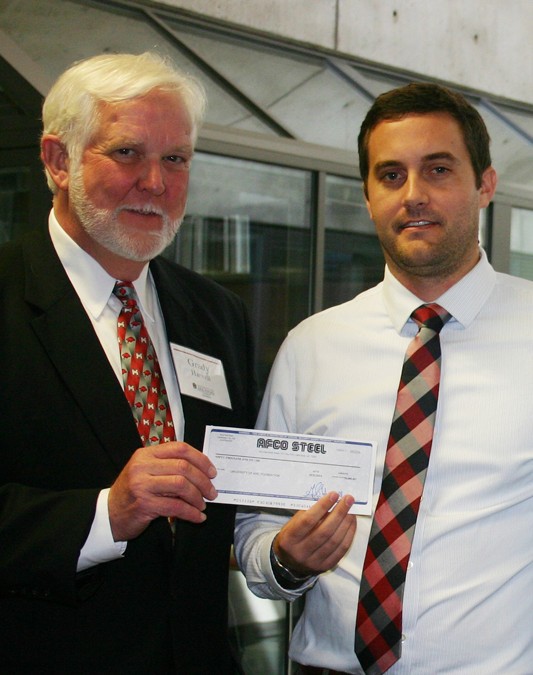Grady Harvell began his career at AFCO Steel in 1972, directly after graduating with a civil engineering degree from the U of A. The steel fabrication company drew Harvell because of its reputation, and he has stayed for 43 years because of the opportunities provided for professional growth and the ability to remain in his native state of Arkansas.
“AFCO was noted at the time for having a strong engineering background. The owners and managers had engineering degrees, and the company had a strong engineering culture,” Harvell explained.
One of his first tasks as an AFCO employee was to set up a computer based estimating department. At that time, everything at AFCO was done by slide rule or paper, and switching to computers was a huge shift, but Harvell explained that he got plenty of support and help. “It was my good fortune to work with a lot of good people whose sole interest was in making the company better.”
Harvell became general sales manager for AFCO in 1980 and was promoted to executive vice president in 1992. In 2002, Joe Brown, the chairman of AFCO, and the Brown family sold the company to W&W Steel of Oklahoma City. Harvell became president of AFCO at that time. Even though the company had changed hands, Harvell explained that AFCO remained the same business with the same people. As president, he is most proud of the fact that W&W and AFCO have remained solid companies that provide good jobs, even during the recession in the past decade.
Harvell has a strong relationship with his alma mater, both professionally and personally. AFCO fabricated the steel for the North End Zone facility and for the 2001 Razorback Stadium & Skybox Expansion on the east side and south end zone. AFCO also supports research at the U of A, because Harvell recognizes that new discoveries about steel infrastructure would benefit his industry as well as improve engineering education.
Harvell is working with civil engineering assistant professor Gary Prinz to investigate more efficient methods of connecting steel to concrete in bridges. Most bridges are built by pouring concrete over steel beams. These beams have steel shear studs on the top flange to develop composite action with the concrete deck, holding the two materials together. The number of studs was determined by research that was conducted in the 1960s.
The current U.S. code requires the use of many studs, more than standards in places like Europe and Japan. If bridges can be built safely with fewer studs, the cost of steel bridges nationwide could be reduced. Also, if studs could be grouped together instead of covering the entire surface of the beam, this would allow construction companies to fabricate the concrete decks of bridges ahead of time, leaving holes for the studs, which would save time and money.
Prinz’s expertise is in the area of fatigue and fracture of steel structures. By performing additional experiments and using advanced statistical methods with existing experimental data, he hopes to make a case that the current standards should be reevaluated.
The relationship between research and industry has several benefits for each side. The steel fabrication industry gets the advantage of research-proven methods while Prinz is able to provide a research education for his students. “Grady is a major supporter of steel and steel research,” said Prinz. “He’s willing to do anything he can to make steel more efficient and economical, including investing in research. He understands that the research process is often important for getting practical things into industry.”
Relationships with industry also benefit the university. Harvell has a stake in making sure the U of A’s civil engineering facilities are state of the art, in order to attract researchers like Prinz and give them the labs they need to do their work. “You can have great players,” he explained, “but without a stadium, they can’t win games.” This drive to help his alma mater grow has led Harvell to engage with the civil engineering department to consider a modern structures research lab, and it is his hope that this need will soon be met.
Harvell’s personal connection with the university began when he was invited to join the Arkansas Academy of Civil Engineering. He became active in that group’s scholarship fundraising activities and eventually became president of the Academy. “As a student, I got a scholarship from a civil engineering alumnus, and that helped me stay in school,” said Harvell, who has endowed a scholarship in his parents’ honor. The Harvell Family Scholarship supports one civil engineering student every year.
When Ashok Saxena, who was dean of the college at the time, asked Harvell to serve on the dean’s advisory council, he saw it as another way to stay involved and give back to the university he loves. In 2014, Dean English asked Harvell to serve as chairman. “I am very honored,” he said. “And I look forward to continuing to work with Dean English. I encourage everyone who has received a degree from the U of A to continue a tradition of giving back any way they can, either financially, or through devoting time and energy. Engineers do that very well.”


